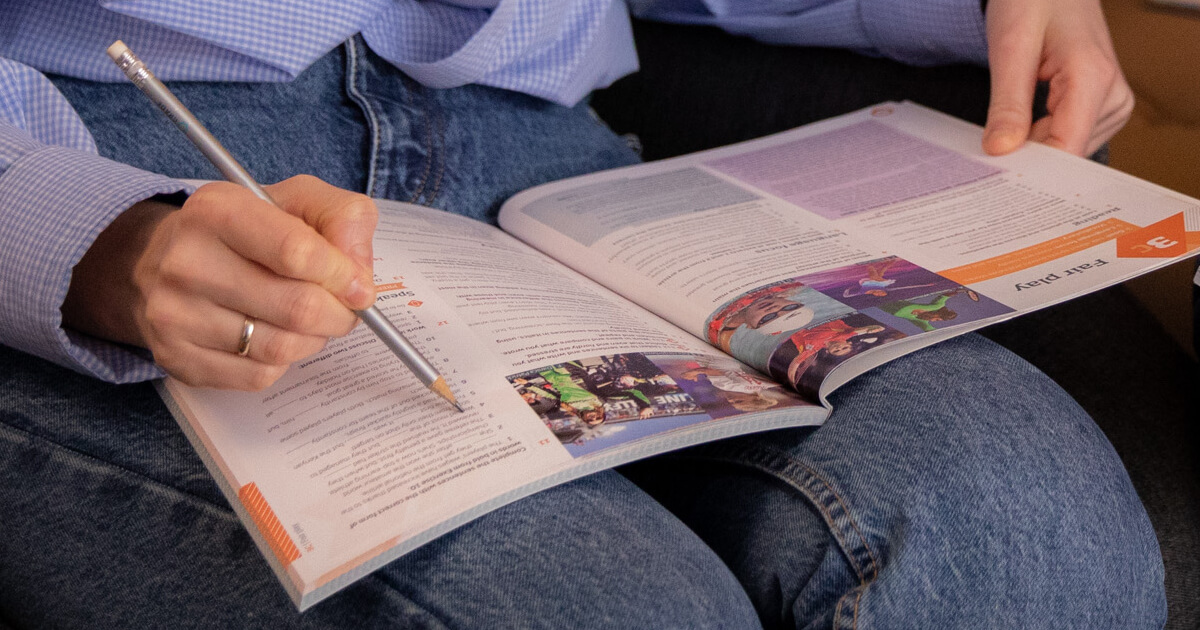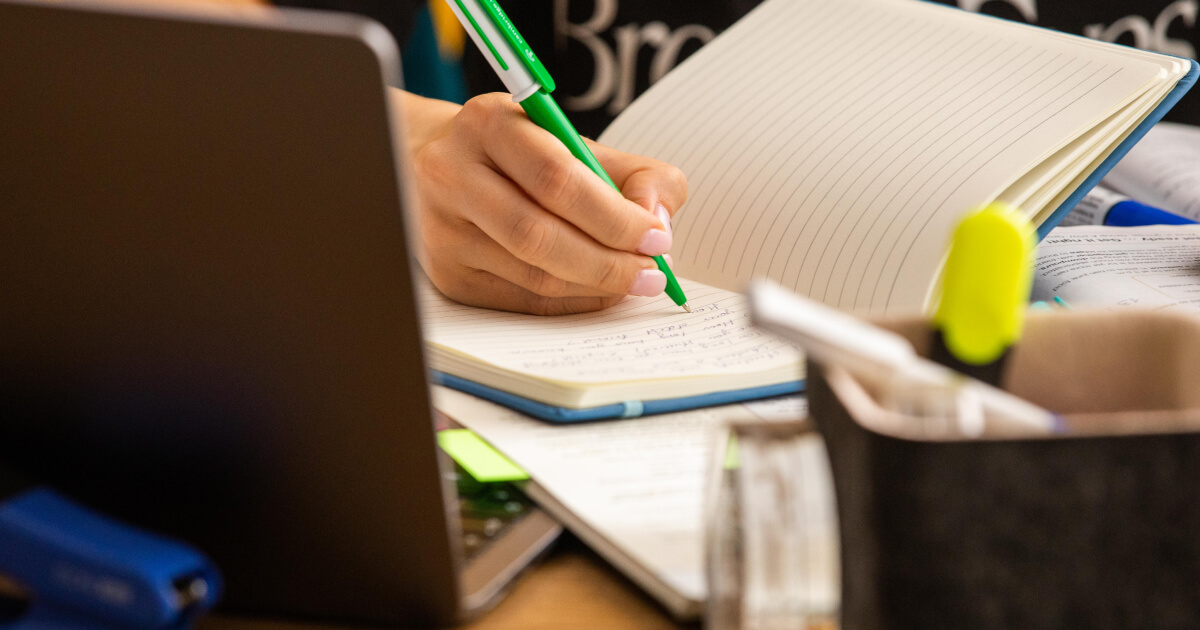Problem-Solving Activities That Encourage Communication
- Speaking
- Activities
- Tips & Strategies

03.01.2024
Even though grammar is an essential part of any language, teaching and learning it can sometimes be a challenge.
However, a grammar lesson doesn’t have to be dry and tedious. In fact, with the right approach, it can become a great opportunity for learners to show their creativity, experiment with language, express themselves, and develop fluency.
Knowing features and different types of practice activities can help you make a grammar lesson more meaningful and show the students that the language they learned can be used not only in gap-filling tasks or other controlled practice exercises but also in real-time communication, which will lead to a deeper understanding of grammar in context and make the language more memorable for learners.
How to use tasks effectively?
After presenting a particular grammar topic to learners, we need to practice the target language and allow students to use it in different contexts. However, we should distinguish a few types of activities for practicing: controlled, semi-controlled, and freer.
Controlled practice includes exercises and activities designed to practice and reinforce specific structures with the main focus on accuracy. There is only one correct answer to each question or item of the task and error correction is often done during the activity so students don’t continue repeating incorrect language.
Controlled practice activities don’t have a communicative purpose and are not interactive, but they make learners consolidate their understanding and memory of meaning and form. These are gap-fill, multiple choice, matching, sentence transformation activities, etc., which focus on form, meaning, use, or combination.
Example: Choose the correct alternative:
1. Tom has been studying / is studying a lot lately.
2. They have known / have been knowing each other for 10 years.

Semi-controlled practice still focuses on accuracy, but there can be a range of correct answers to each question or item. These activities are not really interactive, but students are given more freedom, so they have the chance to personalize the language. This increases the level of communicative challenge slightly.
Example: Complete the sentences with “will” or “won’t” so they are true for you:
1. I ____ do my homework after the lesson.
2. I ____ go shopping at the weekend.
Tasks to practice Conditionals!
Freer practice aims to practice the target language in an unrestricted manner and meaningful contexts. Freer practice activities are said to be fluency-focused as they should prepare the learner and recreate conditions of real-time language use.
There are no correct answers in such tasks, and the emphasis is on meaningful communication and learners` confidence in using the target language rather than on perfect accuracy. Accuracy is still an important aspect, so the teacher might want to do some delayed error correction without interrupting the flow of the practice activity.

Freer practice activities are role plays, group discussions, debates, etc., where students are given the chance to use the target language and their existing language knowledge more flexibly.
Example: Think about two or three of the following that have been important to you. Explain how life would be or would have been different without them.
e.g., If I hadn't moved to Istanbul, I wouldn't have such a good job.

Boost your ELT performance
Prepare for CELTA trainingAs for the specific features of freer practice tasks that every ESL teacher has to know, they are the following:
Additionally, the following features might be added to the list:

For instance:
The teacher shows the learners the form and use of present continuous for future arrangements. Then students use the target language completing gapped sentences, which is controlled practice, to consolidate their understanding of the form. Later students use the target language more freely by describing their plans and schedule for the next week in order to personalize language and have meaningful communication with other students in the group using the target language.
Best activities to teach past tenses
Example: Role-play the situation. Then change roles.
Student A: You are a waiter or waitress at Puck’s Place. Greet the customer, take his or her order, and then check the information.
Student B: You are a customer at Puck’s Place. Order from the menu.

Example: Work in groups. Discuss the questions:
Should students be allowed to grade their teachers, why/ why not?
Education has to be free and available for everyone, do you agree?
Do you think that everyone must get a postgraduate degree? etc.
Example: Work in pairs. Make second conditional questions using this prompt “What would you do if…and why?”. Ask and answer your questions (e.g., What would you do if you got stuck in a lift and why?)
Fun tasks for teaching Wh-questions
Example: Work in groups. You are going to make up a story using narrative tenses. Start your story with “I was walking in the park when I heard a scream…”. Continue the story by adding one sentence in turns.
Information gap: one student has access to some information not held by the other ones, who must ask about this information to complete a task successfully. The game can be played in pairs or in small groups, where all members of the group have some pieces of information.
Example: Work in pairs. Follow the instructions:
Student A: Look at the information about films at the local cinema. Listen to your partner’s questions and use the information to answer them.
Student B: Look at the information about films at the local cinema and ask your partner questions to find out more about the films.

Sentences true for you: Provide prompts that require students to use the target grammar in sentences about themselves. To make it more communicative, ask students to add more details or ask their partner follow-up questions.
Example: Complete the sentences so they are true for you:
I used to hate ________ but now I quite like it.
I used to enjoy ________ but now I don’t.
I didn’t use to care about ________ as much as I do now, etc.
Tasks for students' self-assessment
Example: Work with a partner. Look at your picture for 1 minute and try to remember as many details as possible.
Exchange your picture with a partner. Ask and answer questions about it to test how many details you can remember correctly.

However, remember that it's not just about fun.
As a teacher, you should clearly define learning objectives and make sure that each activity has a specific grammar focus. Freer practice should encourage students to use the target language.
As well as this, don`t forget about feedback and reflection. Provide your students with constructive feedback on both content and language and encourage students to reflect on their learning. Make them analyze what language was used correctly and what should be improved.
How to give feedback effectively?
Freer practice activities move beyond controlled exercises, giving students the freedom to explore, experiment, and internalize grammar naturally. By fostering creativity, collaboration, and meaningful understanding, we can turn grammar from a dreaded subject into a springboard for confident communication.
Try experimenting and personalizing freer practice activities so that they will boost engagement, motivation, and ultimately, your students’ language proficiency.
Is it compulsory for freer practice to encourage students to use the target language?
Alina Butchak
Author
Teacher of General English, Young Learners, Exam Prep
Comments
Leave your comment